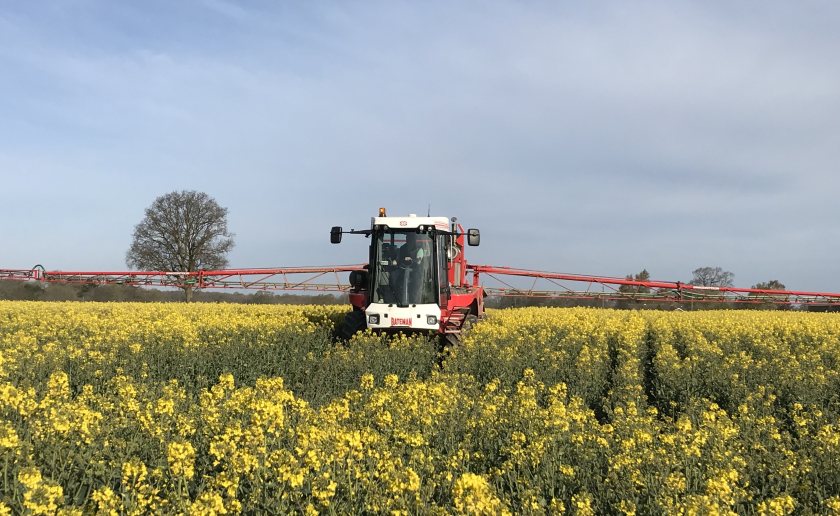
Controlling Sclerotinia disease in oilseed rape crops will be more important than ever this season as the UK’s rapeseed area is considerably down, experts say.
Sclerotinia stem rot is a significant disease of oilseed rape in the UK; it prevents movement of water and nutrition through the plant’s vascular system.
In some circumstances the disease can reduce yields by 50% or result in complete loss through plant death.
Sclerotinia sclerotiorum infects crops in the spring when the fungal ascospores are produced, with the highest risk being during warm humid weather when the crop is in flower, as the spores use petals and pollen as a food source in order to develop.
Effective control of the disease relies largely on protectant fungicides that should be applied during mid-flowering before there is any significant petal fall.
Ascospores released during sclerotinia germination need a nutrient source, which petals provide, otherwise growers risk yield losses.
Ruth Stanley, Life Scientific’s country manager for UK & Ireland, explains how the next few weeks will be vital for growers to control the disease as the majority of crops are coming into flowering.
“Flowering is relatively on track in rapeseed crops this season and will begin in mid-April. Some forward crops are already starting to flower,” she says.
“By spraying during mid-flowering, the peak number of flowers receive the fungicide active, which limits disease spread.
“Another challenge with Sclerotinia decisions is that the fungicides only have a protectant role and have to be applied ahead of infection taking place.
“In some years, a prolonged flowering period can also mean that a second spray is required to maintain protection – adding to the crop’s growing costs at a time when all expenditure is being scrutinised and has to be justified.”
She adds: “Sclerotinia is the reason given for almost 30% of total fungicide use in the crop. Against this background, the weather has become less predictable.
However, Mrs Stanley points out understanding the persistence of fungicides after application is key.
“As Sclerotinia control relies on protectant treatments, it is important to recognise the persistence of control and how this is linked to dose rate, in order to cover the periods, the crop is at most risk from the disease.”
To better understand the persistence and potential impact on activity of fungicides, Life Scientific commissioned trials with ADAS Boxworth.
The trial looked at the effect of dose rates of the fungicides Boscler and Aurelia against Sclerotinia over time.
